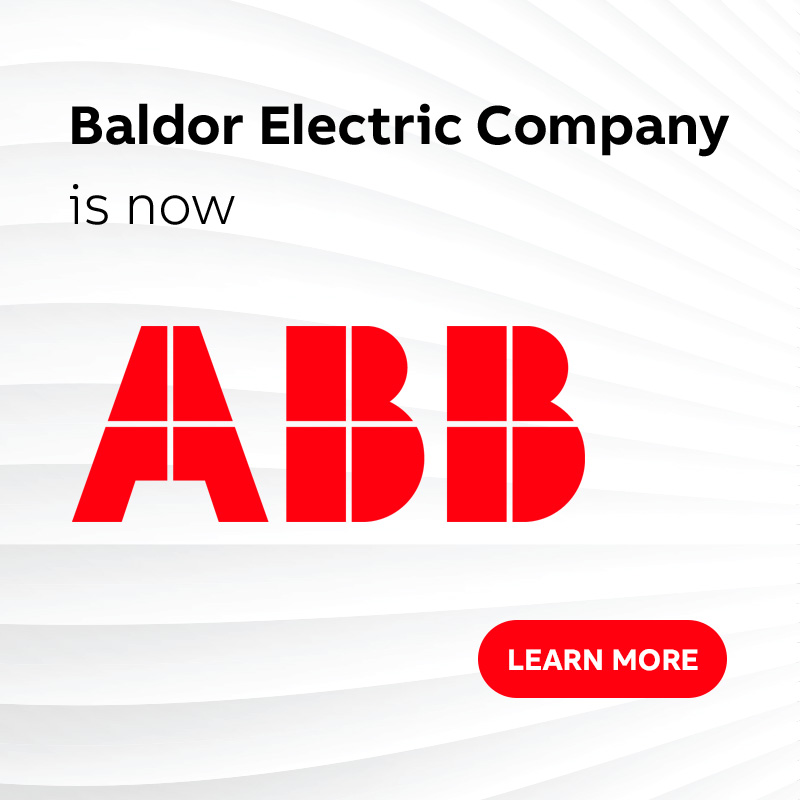
Detail
How to make your HVAC system more efficient
Improving energy efficiency in HVAC installations provides many benefits, including lower energy bills, reduced greenhouse gasses, improved air quality, improved system efficiency and output. Government and industry-specific motor efficiency standards are in place, yet there is still demand to achieve greater efficiencies to support industry and sustainability goals. As regulations tighten on total system efficiency, we must look beyond just motor efficiency to meet new and emerging regulation requirements.
More than half of all electrical energy consumed in the U.S. is used by electric motors, and it is estimated that electric motor-driven systems account for more than 40% of electricity consumption globally, and that number is expected to double by 2040. In the U.S., industrial pumps, fans and compressed air systems account for more than 80% of electricity use in industrial motor systems.
Motor systems consume large amounts of electricity and can provide an opportunity for significant energy savings; therefore, energy efficiency should be a high priority when purchasing a motor. The annual energy cost of running a motor is usually many times greater than its initial purchase price; however, the purchase of a new motor is often driven by the price, not potential electricity consumption. Even a small improvement in efficiency will result in energy and cost savings. Investing a little more money upfront for a more efficient motor is paid back in energy savings; often in as few as one to three years. And, by following industry best practices, electric motor efficiency can be further improved by 20-30%, resulting in significant savings and reduced environmental impact, especially in motors that can remain in operation for 20 years or longer.
The most basic step towards increased energy efficiency is to ensure that the most efficient motors are installed in the HVAC application. There are five international efficiency classes for motors specified by the International Electrotechnical Commission (IEC), ranging from IE1 to IE5, with IE1 being the least efficient and IE5 the most efficient. Each class of efficiency equates to 20 percent lower motors losses. For example, IE4 motors have 20 percent lower losses that IE3 motors, while IE5 motors have 40 percent lower losses than IE3 motors. It is estimated that if 80 percent of the world’s installed industrial motors were replaced with IE5-efficiency motors, 160 terawatt-hours of energy per year would be saved.
The National Electrical Manufacturers Association (NEMA) has defined similar efficiency ratings, and while not exact matches, they are comparable to those of IEC. The NEMA ratings and their approximate IEC equivalents are standard efficiency (IE1), high efficiency (IE2), premium efficiency (IE3) and super premium efficiency (IE4). Although, NEMA has not yet defined an IE5 equivalent standard, some manufacturers in the North American market are marketing motor and variable speed drive systems as “ultra-premium efficiency.”
While an HVAC motor replacement can help achieve a higher level of efficiency, the next step is to pair a high-efficiency motor with a variable speed drive. The drive sits between the electrical supply and the motor and controls the flow of energy. The drive regulates the power that is fed to the motor and adjusts the frequency and the voltage based on the process demands. This means AC motors can be run at the optimal speed and torque according to the demand needed. Using a drive to control the motor can save as much as 40% of the total operating cost.
And, finally, to achieve even more efficiency, a motor-drive pairing using ferrite assisted synchronous reluctance (SynRM) technology will provide an IE5 level of efficiency and simplify the setup while eliminating expensive wiring and installation time. This is a pairing of the most efficient motors available with a performance-matched drive. These systems can include an external drive wired to the motor or an integrated motor/drive (IMD) combination.
Of course, regardless of the motor/drive combination, an HVAC system can only be as efficient as the sum of its components. For an air handling unit, this is generally referenced as the wire-to-air efficiency, and it is the power taken from the electrical supply compared to the airflow and pressure the AHU generates. This total efficiency is a factor of the drive, motor, coupling, fan, coil and other components’ efficiencies. When specifying new motors and drives, be sure to audit the entire system for inefficiencies.
Simply updating outdated motors to newer high-efficiency motor systems would cut global electricity demand by up to 10%, but we can do so much better than that! Join the Energy Efficiency Movement today!

